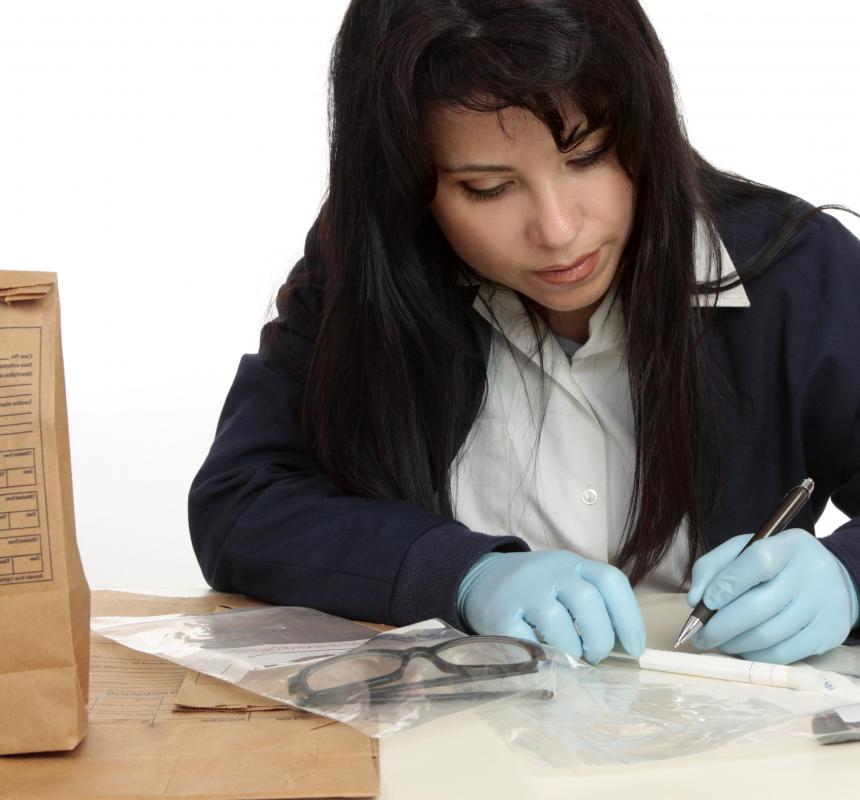At WiseGEEK, we're committed to delivering accurate, trustworthy information. Our expert-authored content is rigorously fact-checked and sourced from credible authorities. Discover how we uphold the highest standards in providing you with reliable knowledge.
How does the Absence of Evidence Affect a Case?
Most cases depend upon presentation of evidence so that the case can be proven, and in most countries, strong reliance on evidence is needed in order to make a reasonable case. Absence of evidence creates significant problems because legal representatives have little means to prosecute or defend without it. Most criminal trials cannot proceed without sufficient evidence that suggests a person should be charged with the crime. A defendant’s failure to provide contradictory evidence or to show that prosecutorial proofs based on evidence are faulty generally means that prosecution is successful and a person is convicted.
In many parts of the world, formal proceedings determine if a case has sufficient evidence to go to trial. In places like the US, Grand Juries make this determination for serious crimes. One of the major points of assessment when a Grand Jury deliberates is whether the evidence presented by the prosecutors is adequate. Complete absence of evidence of any kind or presence only of a small amount of circumstantial evidence tends to mean the Grand Jury will not bind the case over for trial. Since the burden of proving a case rests on the prosecution, there’s less likelihood of obtaining a conviction if evidentiary support is minimal.

There are different types of evidence that may be considered in determining the strength of a case. Solid and strong evidence include incontrovertible physical evidence such as DNA or blood samples, testimony of several witnesses, or possession of weapons used in crimes. Absence of evidence might still be compensated for by a preponderance of circumstantial evidence and a few pieces of hard evidence, linking the defendant to a crime. Since juries in trials are to decide based on the evidence, less than this usually won’t result in conviction. All the defendant’s representatives must do in a fair trial is point to the absence of evidence or poke holes in the prosecution’s explanations of the small amount of evidence they claim establishes guilt.

The requirement for adequate proof can be daunting to investigators and prosecutors, though it is a dearly held concept in the administration of justice in places like the US. There are times when investigators have evidence they can’t use, such as if it was recovered during any illegal search or seizure. Sometimes important facts like past criminal history are also inadmissible. Evidence can also be lost or misplaced, or poor handling of it could render it useless.

As mentioned, a body like the Grand Jury may simply chose not to indict based on absence of evidence. A judge can also end a case if he or she feels insufficient evidence is available to continue. Should a case continue, jury members are empowered to fail to convict based on lack of evidentiary support. Therefore, the absence of evidence is often a major roadblock in obtaining a conviction, though it is good news for the defendant if the lack of evidence stems from the prosecutor’s side.
AS FEATURED ON:
AS FEATURED ON:
















Discussion Comments
We had a local criminal trial the mother of a dead young girl. She and her husband were both accused of drugging the girl, beating her to death and then throwing her body into a river. Police divers recovered a plastic garbage bag and several strips of duct tape, but not the girl's body.
During the mother's trial, the lack of a body became a major issue for both sides. Prosecutors had to use personal testimony from the husband to suggest the murder happened the way they claimed. He verified the use of a garbage bag and duct tape, for instance. Tests on the recovered items showed traces of human DNA.
The defense argued that if there was no body presented as evidence, then any number of things could have happened. The crime never actually took place, or the girl could still be alive somewhere. Even though the circumstantial evidence was strong, the lack of direct evidence kept reasonable doubt in play. The jury actually acquitted the mother.
Post your comments